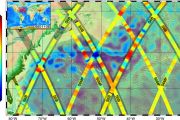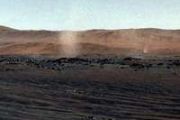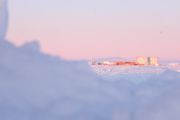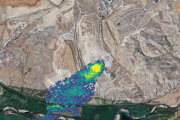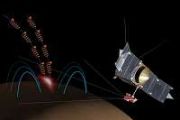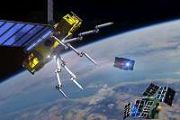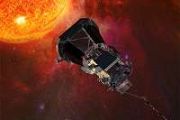
Copernical Team
SpaceX scrubs Starship launch, runs clock down to 10 secs for wet dress rehearsal
 SpaceX on Monday postponed the first test flight of Starship, the most powerful rocket ever built. Liftoff of the giant rocket was called off just minutes ahead of the scheduled launch time because of a pressurization issue, SpaceX officials said.
SpaceX on Monday postponed the first test flight of Starship, the most powerful rocket ever built. Liftoff of the giant rocket was called off just minutes ahead of the scheduled launch time because of a pressurization issue, SpaceX officials said. Tiny magnetic episodes may have large consequences on the Sun
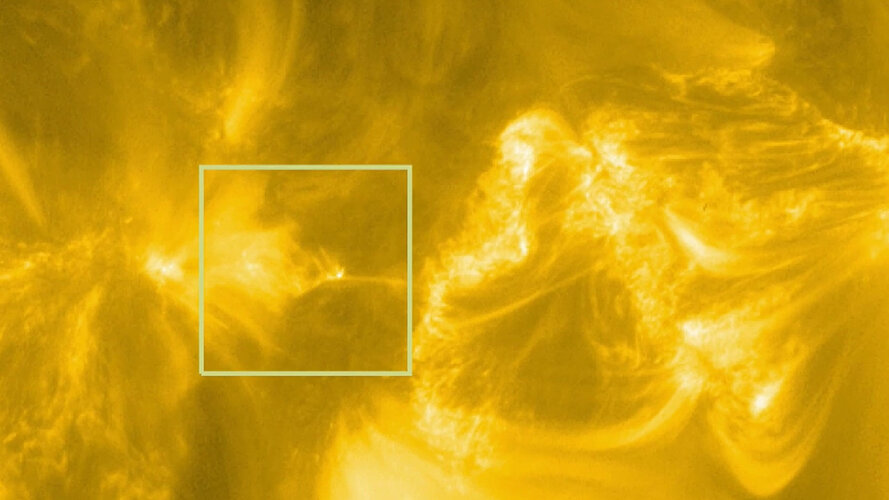 Video:
00:00:42
Video:
00:00:42
ESA’s Solar Orbiter may have taken another step towards solving the eighty-year-old mystery of why the Sun’s outer atmosphere is so hot.
On 3 March 2022, just a few months into Solar Orbiter’s nominal mission, the spacecraft’s Extreme Ultraviolet Imager (EUI) returned data showing for the first time that a magnetic phenomenon called reconnection was taking place persistently on tiny scales.
At that time, the spacecraft was about halfway between the Earth and the Sun. This enabled coordinated observations with NASA’s Solar Dynamics Observatory (SDO) and Interface Region Imaging Spectrograph (IRIS) missions. The data from the three missions was
ESA developing concepts for commercial-scale Space-Based Solar Power plants

ESA has signed contracts for two parallel concept studies for commercial-scale Space-Based Solar Power plants, representing a crucial step in the Agency’s new SOLARIS initiative – maturing the feasibility of gathering solar energy from space for terrestrial clean energy needs.
SpaceX Starship, world's biggest rocket, set for first test flight
 SpaceX is counting down to the first test flight on Monday of Starship, the most powerful rocket ever built, designed to send astronauts to the Moon and Mars and beyond.
The giant rocket is scheduled to blast off from Starbase, the SpaceX spaceport in Boca Chica, Texas, at 8:00 am Central Time (1300 GMT).
Fallback times are scheduled for later in the week if Monday's launch attempt is de
SpaceX is counting down to the first test flight on Monday of Starship, the most powerful rocket ever built, designed to send astronauts to the Moon and Mars and beyond.
The giant rocket is scheduled to blast off from Starbase, the SpaceX spaceport in Boca Chica, Texas, at 8:00 am Central Time (1300 GMT).
Fallback times are scheduled for later in the week if Monday's launch attempt is de What to know about 1st test flight of SpaceX's big Starship
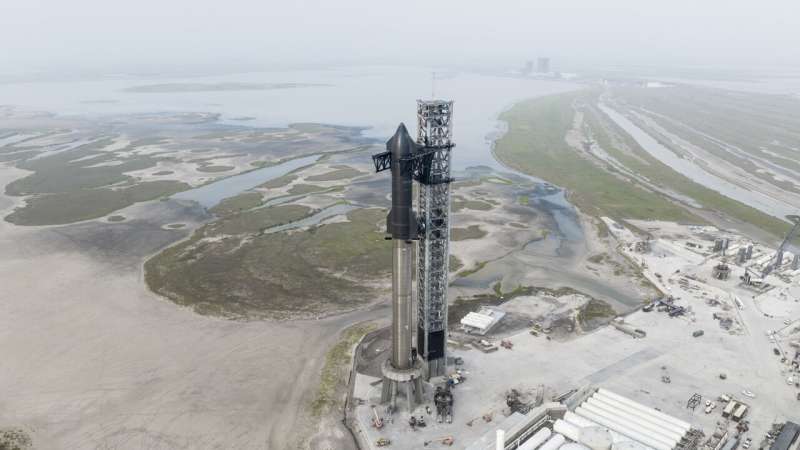
Elon Musk's SpaceX is about to take its most daring leap yet with a round-the-world test flight of its mammoth Starship.
It's the biggest and mightiest rocket ever built, with the lofty goals of ferrying people to the moon and Mars.
Jutting almost 400 feet (120 meters) into the South Texas sky, Starship could blast off as early as Monday, with no one aboard. Musk's company got the OK from the Federal Aviation Administration on Friday.
It will be the first launch with Starship's two sections together. Early versions of the sci-fi-looking upper stage rocketed several miles into the stratosphere a few years back, crashing four times before finally landing upright in 2021.
Intelsat to Extend Life of Satellite with new Mission Extension Pod
 Intelsat, operator of one of the world's largest integrated satellite and terrestrial networks and leading provider of inflight connectivity (IFC), ordered a Mission Extension Pod (MEP) from Northrop Grumman Corporation's SpaceLogistics, which will add life to an Intelsat satellite and provide uninterrupted services to many customers.
The MEP "jet pack" will be installed by SpaceLogistics'
Intelsat, operator of one of the world's largest integrated satellite and terrestrial networks and leading provider of inflight connectivity (IFC), ordered a Mission Extension Pod (MEP) from Northrop Grumman Corporation's SpaceLogistics, which will add life to an Intelsat satellite and provide uninterrupted services to many customers.
The MEP "jet pack" will be installed by SpaceLogistics' AAC Clyde Space SDaaS satellite successfully launched by SpaceX
 EPICHyper-1, a 6U AAC Clyde Space EPIC VIEW satellite, was successfully launched on the SpaceX Transporter 7 mission on April 15, 2023. The satellite will deliver Earth observation data to Canadian company Wyvern Inc., under an exclusive Space Data as a Service (SDaaS) deal. It is planned to be followed by the launch of a further two 6U satellites during 2023.
The satellite lifted off on t
EPICHyper-1, a 6U AAC Clyde Space EPIC VIEW satellite, was successfully launched on the SpaceX Transporter 7 mission on April 15, 2023. The satellite will deliver Earth observation data to Canadian company Wyvern Inc., under an exclusive Space Data as a Service (SDaaS) deal. It is planned to be followed by the launch of a further two 6U satellites during 2023.
The satellite lifted off on t ispace Mission 1 completing key milestones after launch
 ispace reports that its HAKUTO-R Mission 1 Lunar Lander has completed all planned orbital control maneuvers, completing Success 8 of the Mission 1 Milestones.
The Mission 1 Lander performed the final orbital control maneuver in accordance with the mission operation plan, at 10:08 (JST), on April 13, 2023, under the direction of ispace engineers at the HAKUTO-R Mission Control Center in Nih
ispace reports that its HAKUTO-R Mission 1 Lunar Lander has completed all planned orbital control maneuvers, completing Success 8 of the Mission 1 Milestones.
The Mission 1 Lander performed the final orbital control maneuver in accordance with the mission operation plan, at 10:08 (JST), on April 13, 2023, under the direction of ispace engineers at the HAKUTO-R Mission Control Center in Nih TrustPoint launches first commercially-funded, purpose-built PNT microsat
 TrustPoint, an aerospace startup providing next-generation GNSS products and services, has reported the launch of its first satellite. The satellite, named "It's About Time", will allow TrustPoint to mature and demonstrate core technologies as they progress towards delivering GPS-independent global time and positioning services.
"This launch marks a pivotal moment for aerospace innovation,
TrustPoint, an aerospace startup providing next-generation GNSS products and services, has reported the launch of its first satellite. The satellite, named "It's About Time", will allow TrustPoint to mature and demonstrate core technologies as they progress towards delivering GPS-independent global time and positioning services.
"This launch marks a pivotal moment for aerospace innovation, DEWA launches DEWA SAT-2 to better manage UAE utilities
 Dubai Electricity and Water Authority (DEWA) has successfully launched its second nanosatellite DEWA SAT-2 aboard the Falcon 9 rocket of SpaceX from Vandenberg Space Force Base in California, USA. The nanosatellite was designed and developed by Emiratis at DEWA's Research and Development Centre, in collaboration with NanoAvionics in Lithuania.
DEWA SAT-2, a 6U nanosatellite, features a hig
Dubai Electricity and Water Authority (DEWA) has successfully launched its second nanosatellite DEWA SAT-2 aboard the Falcon 9 rocket of SpaceX from Vandenberg Space Force Base in California, USA. The nanosatellite was designed and developed by Emiratis at DEWA's Research and Development Centre, in collaboration with NanoAvionics in Lithuania.
DEWA SAT-2, a 6U nanosatellite, features a hig 


